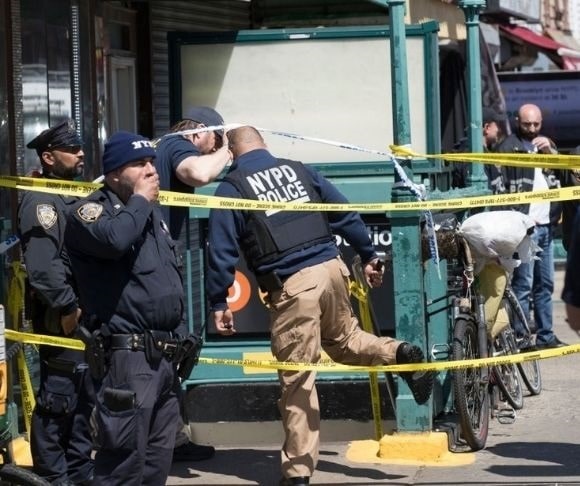
(Photo by Liao Pan/China News Service via Getty Images)
Something is very wrong with many young men in America – this much is known. We can discern this because the demographics indicate these youngsters are the primary perpetrators of mass shootings. This is not new information. While the frequency of these heinous crimes has been rising in the last few decades, the shooters’ demographics have remained remarkably constant. These senseless and very public massacres of innocent people have become a political football centered around the issue of gun control. Politicians, law enforcement, teachers, and parents point to the accessibility of firearms as the real problem. Perhaps it is time to look in another direction.
SSRIs Everywhere
 An extraordinary number of these boys are taking psychiatric medicines known as selective serotonin uptake inhibitors (SSRIs). Thus, it is at least worth exploring whether there is a connection between the high level of SSRI usage in these shooters and their homicidal behaviors. After all, psychiatric drugs are meant to alter one’s behavior. Of course, they are not designed to produce homicidal maniacs, but the incidence of SSRI use in these youngsters is so prevalent that it is a subject worth examining.
An extraordinary number of these boys are taking psychiatric medicines known as selective serotonin uptake inhibitors (SSRIs). Thus, it is at least worth exploring whether there is a connection between the high level of SSRI usage in these shooters and their homicidal behaviors. After all, psychiatric drugs are meant to alter one’s behavior. Of course, they are not designed to produce homicidal maniacs, but the incidence of SSRI use in these youngsters is so prevalent that it is a subject worth examining.
Selective serotonin uptake inhibitors are the most commonly prescribed antidepressants intended to “ease symptoms of moderate to severe depression,” according to the Mayo Clinic. They increase levels of serotonin in the brain. The use of these psychiatric drugs has exploded in recent years. Between 1991 and 2018, SSRI use skyrocketed by more than 3,000%. According to the Berkeley Political Review, one in six Americans are using some form of antidepressant.
The number of mass shooters taking these drugs is astounding: One of the Columbine killers, Eric Harris, was taking Zoloft and Luvox. Fifteen-year-old Kipland Philip Kinkel – who was on Prozac – murdered his parents and then went to his former high school, killing two students and wounding 25 more. Jeff Weise was 16 when he killed his grandfather and another nine people before taking his own life. He was on Prozac, too. Dylann Roof, who shot up a church in Charleston, SC, was also on SSRIs. So were Steven Kazmierczak, James Holmes, Aaron Alexis, and Seung-Hui Cho – all mass shooters on some form of antidepressant. In 2019, Jerome London categorized 39 mass shooters taking SSRIs – or who had abruptly quit taking them – before they went on shooting sprees.
And therein could be a big part of the problem. Psychiatric medications aren’t meant to be stopped abruptly; doctors warn their patients against this. Young people, however, might be more cavalier about the pharmaceuticals they take, causing adverse side effects that results in violent behavior.

(Photo by John Tlumacki/The Boston Globe via Getty Images)
The purpose of SSRIs is to elevate one’s mood and treat anxiety, post-traumatic stress disorder, or obsessive-compulsive behavior, among other psychiatric disorders. Certainly, SSRIs work for millions of people – but they must be handled with care and properly used. These medications carry warning labels citing the potential for increased agitation, irritability, mania, impulsivity, aggressiveness, and hostility. Is it possible they work differently in a young person’s brain than in older individuals? Could these behaviors be exacerbated if a patient stops taking them?
These young people present with similar characteristics: They are angry loners who appear not to be adapting well to adulthood. Many display suicidal tendencies and anti-social personalities. Their social media profiles are filled with violent threats, rage, and an inability to connect with peers and parents alike, and it cannot be ignored that an extraordinary number of them were taking SSRIs.
Examining this possibility is not intended to malign the good that can come from properly using such psychiatric medications. Still, if there is a connection between their use and acts of mass violence, it would seem prudent to study the odd phenomenon instead of continuing to regulate firearms, which are inanimate objects incapable of murder unless wielded by a mentally deranged person.
Remember to check out the web’s best conservative news aggregator
Whatfinger.com — the #1 Alternative to the Drudge


